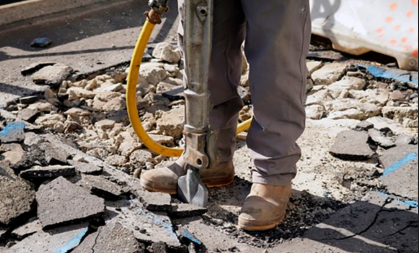Physical Address
Indirizzo: Via Mario Greco 60, Buttigliera Alta, 10090, Torino, Italy
Physical Address
Indirizzo: Via Mario Greco 60, Buttigliera Alta, 10090, Torino, Italy


What is the purpose of the legal system that protects Algerians against noise pollution? There is no point in giving the answer, everyone concerned knows it. It is obvious when you live in an urban environment, particularly in Algiers. Almost nothing is done against noise. It is as if the notion of sound comfort was unknown. However, there is no legal loophole that authorizes noise pollution.
The law of July 19, 2003 contains requirements for protection against acoustic nuisance (Title IV, chapter 2) which aim to “prevent, suppress or limit the emission or propagation of noise or vibrations likely to present dangers harmful to the health of people, to cause them excessive disturbance or to harm the environment”.
The law subjects noisy activities, of whatever nature, to the very strict regime of classified installations, which corresponds to recognition of the right to silence. When activities are likely, through the noise they cause, to present dangers or cause problems to health or the environment, they are subject to authorization.
The issuance of this authorization depends on the completion of the impact study and public consultation. The law obviously targets works of public utility (repair of water pipes or repair of a roadway, for example) and not leisure or commercial advertising activities which must be subject to sound insulation or be located away from homes.
Article 108 of this law provides for sanctions against noise makers: two years’ imprisonment and a fine of 200,000 DA. No one is supposed to be ignorant of the law (article 78 of the Constitution, chapter 2. Duties), but there are officials in local authorities who, obviously, have never read article 113 of the health law which stipulates that “the State and local authorities are required to ensure compliance with the rules for preventing the harm of noise pollution or any other type of nuisance, in accordance with the legislation and regulations in force”.
Ditto for the Highway Code (Order 09-03 of July 22, 2009), which classifies as 3rd degree (fixed fine of 2,000 to 4,000 DA), the contravention of the provisions relating to the emission of noise (the abusive use of the horn or the radio) beyond the fixed thresholds (article 45 of the law of August 19, 2001).
In the law of December 2, 1991, relating to public meetings and demonstrations, article 20 ter stipulates that “the installation or use of fixed sound systems, temporary or permanent, is subject to prior authorization from the wali”. Further back in time, Executive Decree 93-184, still in force, signed by Belaid Abdesselam, head of Government at the time, sets the noise intensity thresholds at 70 decibels (db), between 6 a.m. and 10 p.m. (daytime), and 45 db, at night (10 p.m. to 6 a.m.), with a reduction of these thresholds to 45 db and 40 db around hospitals “.
All noise provisions contained in all laws are virtually ignored. However, the healthy environment proclaimed by the Constitution includes the sound comfort that the ancients called “essousta” (silence).
Algerians have always preferred “essousta” to noise (atiouenna essousta, give us silence!).
Today, in urban areas, noise is everywhere: works on public roads, abusive use of horns or radios by motorists, sirens, vehicles and motorcycles in circulation with silent exhaust systems removed or modified, explosions of firecrackers and fireworks, leisure activities or commercial advertising and noisy celebrations with loudspeakers on public roads… Noise pollution disturbs the tranquility that people seek in public spaces: squares, gardens, squares or on cafe terraces, and even to the balconies of homes.
Noise pollution is regularly mentioned and denounced by the Algerian press which relays the discontent of local residents attacked by the noise. Specialists have established that noise pollution has harmful effects on humans: increased risk of hearing disorders or tinnitus, sleep disorders, psychological disorders, learning disorders in children, risk of cardiovascular diseases, high blood pressure, and even heart attacks.
M’hamed Rebah